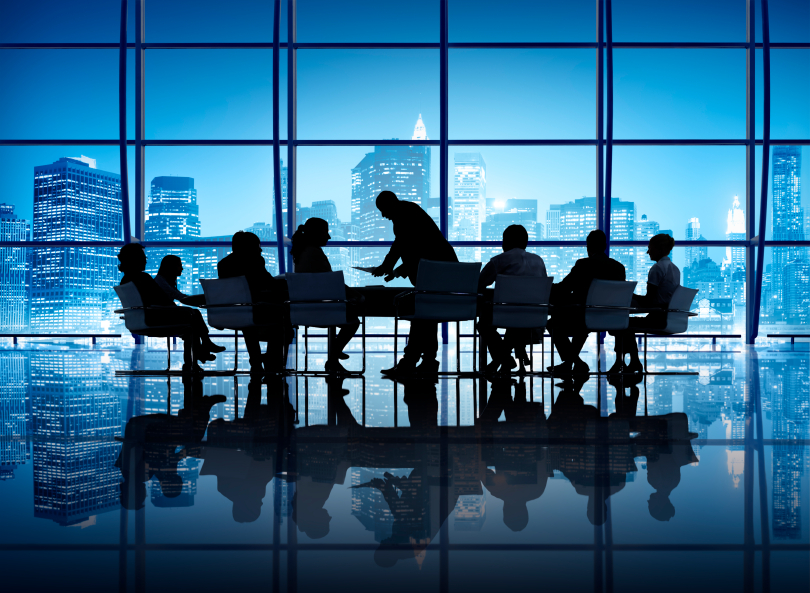Navigating the World of Corporate Security: Secret Insights and Ideal Practices
Navigating the World of Corporate Security: Secret Insights and Ideal Practices
Blog Article
From Cybersecurity to Physical Actions: Strengthening Company Safety And Security in a Transforming Globe
By combining the toughness of both cybersecurity and physical security, companies can develop a detailed protection method that addresses the varied variety of threats they encounter. In this discussion, we will certainly discover the altering danger landscape, the need to incorporate cybersecurity and physical safety, the execution of multi-factor verification actions, the relevance of staff member recognition and training, and the adjustment of security procedures for remote labor forces. By taking a look at these key areas, we will acquire important insights into exactly how companies can enhance their business safety in an ever-changing world.
Recognizing the Changing Threat Landscape
The advancing nature of the modern-day globe necessitates an extensive understanding of the altering hazard landscape for efficient company safety. It is important for organizations to stay educated and adjust their safety and security gauges to address these evolving dangers.
One key facet of understanding the changing risk landscape is identifying the various kinds of threats that organizations deal with. Furthermore, physical hazards such as theft, vandalism, and company espionage remain common worries for services.
Tracking and evaluating the threat landscape is vital in order to determine possible risks and susceptabilities. This involves staying upgraded on the most recent cybersecurity patterns, evaluating danger knowledge reports, and performing regular danger assessments. By recognizing the changing risk landscape, companies can proactively implement ideal safety and security procedures to mitigate threats and protect their possessions, online reputation, and stakeholders.
Integrating Cybersecurity and Physical Protection
Integrating cybersecurity and physical safety and security is vital for thorough company protection in today's electronic and interconnected landscape. As organizations increasingly depend on technology and interconnected systems, the limits between physical and cyber hazards are becoming obscured. To efficiently safeguard versus these dangers, an all natural method that integrates both cybersecurity and physical security measures is necessary.
Cybersecurity concentrates on securing digital assets, such as systems, data, and networks, from unauthorized accessibility, disturbance, and burglary. Physical security, on the other hand, incorporates actions to secure physical properties, people, and facilities from dangers and vulnerabilities. By integrating these two domains, organizations can deal with vulnerabilities and threats from both physical and digital angles, thus boosting their general safety pose.
The integration of these two disciplines enables for a much more detailed understanding of protection dangers and enables a unified action to events. Physical accessibility controls can be improved by integrating them with cybersecurity protocols, such as two-factor verification or biometric recognition. Cybersecurity measures can be complemented by physical safety and security measures, such as monitoring video cameras, alarms, and secure access points.

Implementing Multi-Factor Authentication Actions
As organizations progressively prioritize detailed security measures, one effective technique is the execution of multi-factor authentication actions. Multi-factor authentication (MFA) is a protection method that calls for users to give numerous types of recognition to access a system or application. This technique includes an additional layer of security by combining something the user knows, such as a password, with something they have, like a protection or a fingerprint token.
By applying MFA, organizations can significantly enhance their protection stance - corporate security. Standard password-based authentication has its restrictions, as passwords can be quickly endangered or neglected. MFA minimizes these threats by adding an extra verification element, making it harder for unauthorized individuals to get to delicate info
There are numerous kinds of multi-factor authentication approaches readily available, including biometric authentication, SMS-based confirmation codes, and hardware tokens. Organizations need to assess their specific demands and choose one of the most proper MFA service for their needs.
However, the execution of MFA should be thoroughly intended and performed. It is critical to strike a balance in between protection and usability to avoid user irritation and resistance. Organizations should also consider potential compatibility issues and provide ample training and assistance to make sure a smooth change.
Enhancing Staff Member Awareness and Training
To enhance corporate safety and security, organizations have to focus on boosting worker understanding and training. Numerous protection breaches happen due to human mistake or absence of More Help recognition.
Reliable employee recognition and training programs ought to cover a wide variety of subjects, including information security, phishing attacks, social design, password hygiene, and physical safety and security procedures. These programs should be tailored to the certain requirements and duties of various employee functions within the company. Normal training workshops, simulations, and sessions can help workers create the required skills and understanding to determine and react to protection threats efficiently.
Moreover, companies need to urge a culture of safety understanding and provide recurring updates and tips to maintain staff members educated regarding the most recent risks and mitigation methods. This can be done through internal communication channels, such as e-newsletters, intranet websites, and e-mail projects. By cultivating a security-conscious workforce, companies can significantly reduce the possibility of protection incidents and shield their beneficial assets from unauthorized access or concession.

Adapting Safety Procedures for Remote Workforce
Adapting company safety measures to fit a remote labor force is necessary in making sure the security of sensitive details and possessions (corporate security). With the boosting pattern of remote work, companies need to execute ideal protection measures to alleviate the dangers associated with this new means of working
One essential aspect of adapting safety procedures for remote job is developing safe and secure communication networks. Encrypted messaging platforms and digital exclusive networks (VPNs) can aid protect delicate info and stop unauthorized accessibility. Additionally, organizations must implement the use of solid passwords and multi-factor verification to improve the protection of remote access.
Another crucial consideration is the execution of protected remote gain access to solutions. This entails giving staff members with protected accessibility to business sources and information via digital desktop computer facilities (VDI), remote desktop computer protocols (RDP), or cloud-based services. These modern technologies make certain that delicate details remains safeguarded while allowing employees to execute their functions efficiently.

Last but not least, extensive safety and security recognition training is critical for remote workers. have a peek here Training sessions must cover finest methods for firmly accessing and handling sensitive details, identifying and reporting phishing attempts, and maintaining the general cybersecurity health.
Conclusion
In final thought, as the hazard landscape continues to progress, it is crucial for organizations to reinforce their safety and security measures both in the page cyber and physical domains. Integrating cybersecurity and physical protection, applying multi-factor verification steps, and improving staff member awareness and training are necessary steps towards accomplishing durable business security.
In this conversation, we will certainly discover the altering danger landscape, the requirement to incorporate cybersecurity and physical safety, the execution of multi-factor verification procedures, the significance of employee understanding and training, and the adjustment of protection procedures for remote labor forces. Cybersecurity procedures can be matched by physical security steps, such as surveillance cams, alarm systems, and secure accessibility points.
As organizations progressively prioritize thorough safety and security steps, one effective strategy is the implementation of multi-factor authentication actions.In final thought, as the hazard landscape continues to develop, it is vital for companies to reinforce their protection gauges both in the cyber and physical domain names. Incorporating cybersecurity and physical safety, carrying out multi-factor verification steps, and improving worker awareness and training are necessary actions in the direction of attaining robust company security.
Report this page